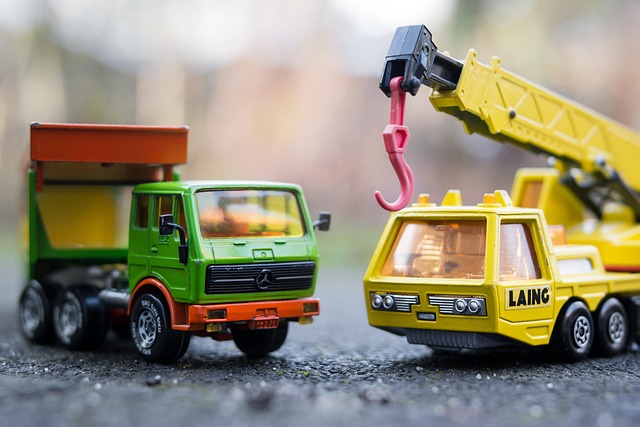“Uncertain about how to register your car in California? This comprehensive guide breaks down the process step by step. From understanding the California car registration requirements to gathering essential documents for DMV VIN verification, we’ve got you covered. Learn how to complete the DMV registration form efficiently and pay the associated fees. Additionally, discover crucial post-registration follow-up steps to ensure a smooth experience.”
- Understanding the California Car Registration Process
- Gathering Necessary Documents for DMV Vin Verification
- Step-by-Step Guide: Completing the DMV Registration Form
- Paying the California Car Registration Fees
- Post-Registration: Important Follow-Up Steps and Tips
Understanding the California Car Registration Process

In California, registering a car involves several steps that can seem overwhelming for first-time owners. Understanding the process is key to ensuring a smooth experience. The California Department of Motor Vehicles (DMV) oversees vehicle registration and issues license plates. The primary step is to obtain a Vehicle Identification Number (VIN) verification, which confirms the authenticity of your vehicle’s details like make, model, and year. This verification is typically done by submitting the VIN to the DMV or using a trusted mobile vin inspection service for convenience.
Once your VIN has been verified, you’ll need to gather essential documents, including proof of insurance, a completed application form, and any required fees. A mobile vin verifier can assist in this process by providing immediate validation, ensuring that you have all the necessary information before heading to the DMV. This streamlines the registration, making it less time-consuming for California residents.
Gathering Necessary Documents for DMV Vin Verification

To register your car in California, you’ll need to go through a process called DMV VIN verification. Before heading to the Department of Motor Vehicles (DMV), ensure you gather all the necessary documents. This includes proof of ownership, typically a vehicle title or a bill of sale, and a valid driver’s license or state ID card. Additionally, your vehicle must pass a safety inspection, which involves a thorough check of critical components like lights, brakes, tires, and emissions systems to ensure they meet California’s safety standards.
For convenience, many Californians opt for a mobile VIN inspection or use a mobile vin verifier service. These services send a professional inspector directly to your location to conduct the required checks. Having your car inspected in this manner can save you time and effort, especially if you’re already busy with other commitments. By ensuring all documentation is in order and your vehicle passes the vin inspection, you’ll be one step closer to officially registering your car with the DMV.
Step-by-Step Guide: Completing the DMV Registration Form

Completing the DMV registration form is a straightforward process once you have all the required documents and information. Start by visiting your local California Department of Motor Vehicles (DMV) office or using their online services to access the form. Fill out Section 1, which includes basic vehicle details like the make, model, year, and type of vehicle. Ensure you accurately record the Vehicle Identification Number (VIN), as this is crucial for verification purposes.
Next, proceed to Sections 2 and 3, where you’ll need to provide proof of ownership and insurance, respectively. For a smooth registration process, consider having your vehicle’s VIN inspected by a trusted mobile vin inspection service to ensure its accuracy before submitting the form. Remember to double-check all information for errors and completeness to avoid delays in processing your car registration.
Paying the California Car Registration Fees

When registering your car in California, you’ll need to pay several fees, which can vary depending on the type and age of your vehicle. The California Department of Motor Vehicles (DMV) charges a base registration fee plus additional costs for vehicles with higher emissions or those that are considered luxury or sports cars. One important step in the process is the DMV’s vin verification, where they check the car’s unique vehicle identification number (VIN). This ensures the car’s history and authenticity, which is crucial before any registration can occur.
For a smoother process, many California residents opt for convenient services like mobile vin inspection or a mobile vin verifier. These options allow you to get your VIN checked right at your location, saving time and effort. By utilizing these modern solutions, such as a mobile vin verification service, the traditional DMV visit becomes less of a hassle, making car registration more efficient and accessible.
Post-Registration: Important Follow-Up Steps and Tips

After successfully registering your car in California, there are several crucial follow-up steps to ensure a smooth ownership experience. One critical aspect is completing the DMV VIN verification process. This involves confirming the Vehicle Identification Number (VIN) and ensuring it matches the vehicle’s characteristics, including its make, model, and year. You can conduct this important inspection through various methods, such as an online check or by visiting a local DMV office.
Additionally, consider utilizing mobile vin verification services for added convenience. These services allow you to have the VIN inspection done from the comfort of your home or on-the-go, making it an efficient way to stay compliant with California’s vehicle registration requirements. Remember that prompt action is essential; ensure all paperwork is in order and maintain regular maintenance checks to avoid any future issues related to your car’s registration.
Registering a car in California is a straightforward process, but understanding each step is crucial. From gathering essential documents for DMV VIN verification to completing the registration form accurately, every action ensures your vehicle’s legal status. Once registered, remember to follow up with important tasks like updating insurance and displaying your license plate. By adhering to these steps, you’ll navigate the California car registration process smoothly, keeping your vehicle on the road legally.
